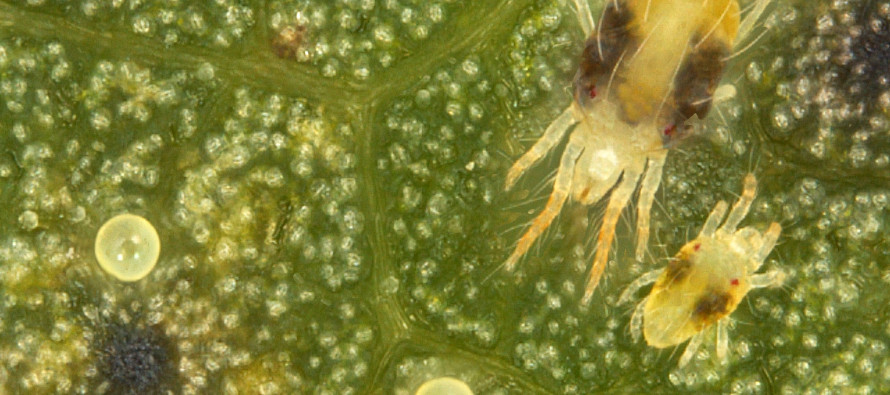Spider Mite Management in Cotton: Key Considerations During Hot, Dry Conditions

Related Articles
- Calcium and Magnesium For Mississippi Crops 1
- March 11 Precision Agriculture Workshop 0
- Ground Speed Affects Spray Droplet Deposition 0
Latest Tweets
As hot and dry weather becomes more common across Mississippi, spider mite populations have the potential to reach treatable levels in areas. Effective management depends on timely decisions based on field scouting, pest interactions, product selection, and weather forecasts. Consider the following:
Field Monitoring and Scouting
- Spider mite distribution is patchy, often beginning on field edges and forming clumps within fields.
- Symptomology lags behind infestation—mites are typically present several days before visible injury occurs.
- Focus scouting efforts on:
- Field margins and stressed areas.
- Fields near corn or dusty roads.
- Lower canopy leaves, where mites often begin.
- Track changes over time—monitor whether mite presence or damage is increasing across multiple scouting dates.
Making Treatment Decisions
- Infestation duration matters: Research shows infestations lasting longer than 14 days, even at low levels can significantly reduce yield.
- Don’t wait for visible symptoms to initiate treatment if mites are present and increasing.
- Use thresholds to justify treatment and avoid unnecessary applications. Treatment is essential when 40 to 50 percent or more of plants are infested and populations are increasing.
Interaction with Other Insecticide Applications
- Be cautious with insecticide selection for other pests, especially tarnished plant bugs:
- Some products (e.g., organophosphates, pyrethroids) have the potential to flare spider mite populations.
- Transform is less likely to flare mites and may be a better choice if mites are present.
Impact of Weather
- Spider mites thrive in hot, dry conditions.
- Rainfall can temporarily suppress mite populations.
- However, rainfall alone is not a reliable control method and often only delays treatment by a few days.
Miticide Options and Efficacy
- Abamectin:
- Most common first-choice miticide.
- Cost-effective, but recent control has been inconsistent in some areas.
- Zeal and Portal:
- Provide excellent control, often with a single application.
- More expensive.
- Treatment cost is typically higher than for other pests, but delayed or ineffective control can result in greater yield losses.
Early detection and strategic treatment decisions are critical to avoiding long-term yield loss from spider mites. Factor in pest interactions, product choices, and weather trends to optimize control.
Write a comment
No Comments
View comments




Let me tell You a sad story ! There are no comments yet, but You can be first one to comment this article.
Write a comment